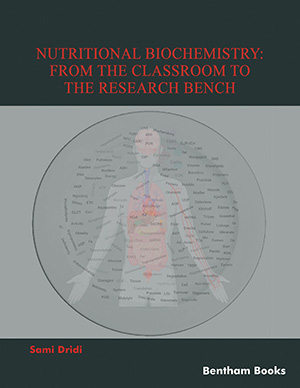
Abstract
Muscle dysfunction is a common occurrence in malnutrition resulting in poorer functional status, delayed recovery and impaired outcome in chronic and acute disease. Although it is a well-known phenomenon, its pathogenesis is not yet completely understood. Loss of muscle mass undeniably contributes to impaired function, but is not the only factor. Muscle function is known to respond earlier to food deprivation than other nutritional indices, implying further factors to be responsible of the muscle weakness observed in malnutrition. Many recent studies have contributed to shed light on the alterations in muscle cell energetics occurring in malnutrition (i.e. enzyme depletion, mitochondrial dysfunction, impaired oxidative phosporylation and electrolyte disturbances and altered cell membrane potential), suggesting several mechanisms leading to impaired muscle function.
Keywords: malnutrition, muscle dysfunction, muscle morphology, enzyme kinetics, cell energetics, atp, creatine phosphate, ca, k, cell membrane potential
Current Nutrition & Food Science
Title: Muscle Dysfunction in Malnutrition
Volume: 1 Issue: 3
Author(s): Kristina Norman, Herbert Lochs and Matthias Pirlich
Affiliation:
Keywords: malnutrition, muscle dysfunction, muscle morphology, enzyme kinetics, cell energetics, atp, creatine phosphate, ca, k, cell membrane potential
Abstract: Muscle dysfunction is a common occurrence in malnutrition resulting in poorer functional status, delayed recovery and impaired outcome in chronic and acute disease. Although it is a well-known phenomenon, its pathogenesis is not yet completely understood. Loss of muscle mass undeniably contributes to impaired function, but is not the only factor. Muscle function is known to respond earlier to food deprivation than other nutritional indices, implying further factors to be responsible of the muscle weakness observed in malnutrition. Many recent studies have contributed to shed light on the alterations in muscle cell energetics occurring in malnutrition (i.e. enzyme depletion, mitochondrial dysfunction, impaired oxidative phosporylation and electrolyte disturbances and altered cell membrane potential), suggesting several mechanisms leading to impaired muscle function.
Export Options
About this article
Cite this article as:
Norman Kristina, Lochs Herbert and Pirlich Matthias, Muscle Dysfunction in Malnutrition, Current Nutrition & Food Science 2005; 1 (3) . https://dx.doi.org/10.2174/157340105774574839
| DOI https://dx.doi.org/10.2174/157340105774574839 |
Print ISSN 1573-4013 |
| Publisher Name Bentham Science Publisher |
Online ISSN 2212-3881 |
Call for Papers in Thematic Issues
Bioactive Compounds, Functional Foods, Metabolism, and Health
Nutrition, metabolism, and their intervention strategies have become focal points of interest in the study of metabolic syndrome and health. Bioactive compounds, phytochemicals, and functional foods play crucial roles in modulating metabolic processes and improving human health. Moreover, the composition of the gut microbiome is also believed to be closely ...read more
Harnessing Bioactive Compounds from Food Waste: Sustainable Extraction Strategies and Health Applications
Food waste presents a significant challenge across the postharvest cycle, from agricultural production to distribution. However, within this waste lies a treasure trove of bioactive chemicals that hold immense potential for nutraceuticals, functional foods, and postharvest additives, including antimicrobials. Various extraction methods, such as solvent extraction (SE), supercritical fluid extraction ...read more
Natural Bioactive Compounds Derivatives in Nutraceutical and Food Science
In the last years, plants have been widely used for their numerous properties and now there is growing interest in the study of classes of compounds obtained from plant species or derived from them. The importance of these natural compounds lies in their important therapeutic purposes, and in their capability ...read more
The Core Linkage Between Probiotics Encapsulation by the Natural Phytochemicals as Health and nutritional-related Functional Products: Recent Applications
The exploration of probiotics encapsulation through natural phytochemicals has emerged as a pivotal area of research, particularly in the context of health and nutrition. Probiotics, defined as live microorganisms that confer health benefits to the host, have gained considerable attention for their role in enhancing gut health, boosting the immune ...read more
Related Journals
 4
4
- Author Guidelines
- Graphical Abstracts
- Fabricating and Stating False Information
- Research Misconduct
- Post Publication Discussions and Corrections
- Publishing Ethics and Rectitude
- Increase Visibility of Your Article
- Archiving Policies
- Peer Review Workflow
- Order Your Article Before Print
- Promote Your Article
- Manuscript Transfer Facility
- Editorial Policies
- Allegations from Whistleblowers
- Announcements
Related Articles
-
Current View on the Mechanism of Action of Perifosine in Cancer
Anti-Cancer Agents in Medicinal Chemistry High Mobility Group Box Protein-1 in HIV-1 Infection: Connecting Microbial Translocation, Cell Death and Immune Activation
Current HIV Research Molecular Determinants of Gastrointestinal and Liver Cancers: Role of Bile Acid Activated Nuclear Receptors
Current Topics in Medicinal Chemistry Extrahepatic Targets and Cellular Reactivity of Drug Metabolites
Current Medicinal Chemistry Vitamin D and Metabolic Syndrome: Is There a Link?
Current Pharmaceutical Design New Treatment Concepts In Diffuse Large B-Cell Lymphomas (DLBL): Chemotherapy and Biological Therapy
Reviews on Recent Clinical Trials A Comprehensive Literature Review of Lipids Used in the Formulation of Lipid Nanoparticles
Current Nanomaterials RAGE and RAGE Ligands in Cancer
Current Molecular Medicine Asafoetida, Natural Medicine for Future
Current Nutrition & Food Science Pancreatic Cancer and Personalized Medicine: Can Genomics Facilitate Early Diagnosis or Improve Therapeutic Outcomes?
Current Pharmacogenomics and Personalized Medicine Nanoparticles in Biomedicine: New Insights from Plant Viruses
Current Medicinal Chemistry Molecular Determinants of Fluoroquinolone Antibacterial Agents Pharmacokinetics
Current Clinical Pharmacology Physiological Mechanisms of Action of Incretin and Insulin in Regulating Skeletal Muscle Metabolism
Current Diabetes Reviews The Role of Sensing Peptides in the Cross-talk between Microbiota and Human Cancer Cells
Mini-Reviews in Medicinal Chemistry Epigenetically - Targeted Therapies for the Treatment of Hematological Malignancies
Current Medicinal Chemistry Medical Image Processing Technology for Diagnosing and Treating Cancers
Recent Patents on Biomedical Engineering (Discontinued) Host-Pathogen Interactions and the Pathological Consequences of Acute Systemic Candida albicans Infections in Mice
Current Drug Targets Fluorescein Fluorescence Use in the Management of Intracranial Neoplastic and Vascular Lesions: A Review and Report of a New Technique
Current Drug Discovery Technologies Biotechnological Applications of Trametes versicolor and their Enzymes
Current Biotechnology Identification of Enzyme Inhibitors from Phage-Displayed Combinatorial Peptide Libraries
Combinatorial Chemistry & High Throughput Screening


















